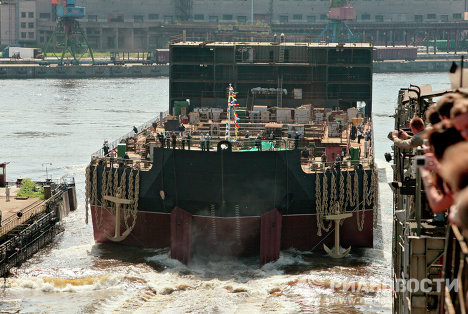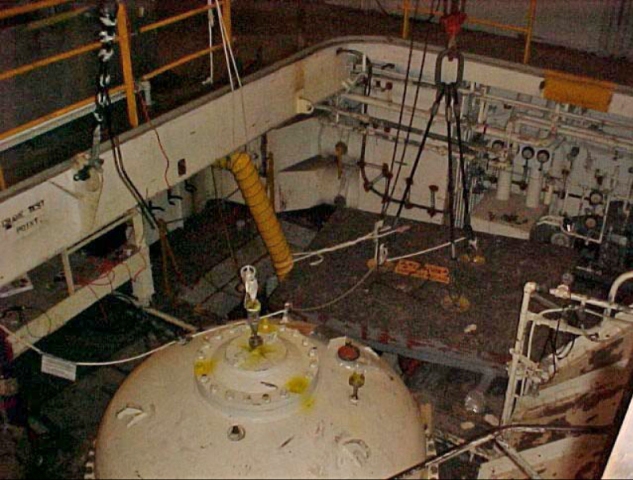The first Russian Floating Nuclear Power Plant (FNPP) was launched at the end of June 2010 (photo #1), the two nuclear reactors with a capacity of 35 MW x2 will be installed, according to the Russian authorities, before 2012. However delays are possible. This new nuclear activity is worrying, particularly because dealing with radioactive waste from Russian ice breakers and nuclear submarines as well as their dismantling continue to be a heavy burden.
 Launching ceremony of the Akademik Lomonosov © RIA Novosti Alexei Danichev
Launching ceremony of the Akademik Lomonosov © RIA Novosti Alexei Danichev
The first FNPP Akademik Lomonosov will be deployed in the peninsula of Kamchataka in the Pacific Ocean, off the coast of the small town Vilyuchinsk. To date another eight floating plants are projected and will be deployed in the Arctic Ocean. These plants will be connected to small remote community grids as well as to industrial offshore/onshore activities. They will be used to provide energy but they can also be used to desalinize up to 240,000 cubic meters of seawater per day, a supplementary source to the destabilization of marine ecosystems. Countries such as China, Malaysia, Indonesia, Algeria and Argentina are interested by these new applications of nuclear energy.
The major risks include proliferation of spent fuel and of radioactive waste, the misappropriation of enriched uranium for military purposes, terrorist attacks, chronic and accidental pollution of nuclear reactors as well as the contamination of seafood and the marine environment. Accidents will be difficult to control due to the possible lack of salvage means and the temptation to hide incidents will be all the more easier due to the remoteness of the concerned areas.
Lack of current information on radioactivity present in the Arctic marine environment is a major concern. There is an obvious need to improve assessments. This new source of potential radioactivity in the aquatic environment will be addressed by the association Robin des Bois at the next ministerial meeting of OSPAR (Bergen Norway) the international convention for the protection of the marine environment of the North-East Atlantic. To date Russia is not a member country of the OSPAR convention.
The idea of nuclear floating power plants originated at the end of the 60s in the United States when a Liberty ship renamed Sturgis, was mounted with a reactor of 10 MW aimed at providing an American military base with electricity in the Panama Canal area.
The spent fuel tank of the Sturgis, used as a garbage bin for radioactive waste issued from the cleaning of the ship (photo #2).
A strategy to decommission the Sturgis was developed at the end of the 70s, however, she is still moored today in the James River in Virginia on the Atlantic coast with the radioactive waste sealed onboard. The Sturgis is an unknown example of difficulties of dealing with nuclear waste.
FNPPs are a new illustration of the perspective to use the world’s oceans as industrial zones. According to Robin des Bois, their exploitation should be delayed until an international agreement is put in place by the International Atomic Energy Agency (IAEA), the International Maritime Organization (IMO) and other competent bodies.
 Imprimer cet article
Imprimer cet article









